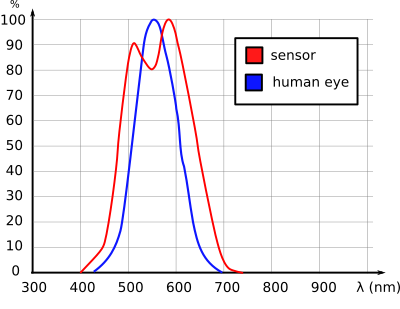![]() This week, we have invited a guest on our blog. Infinitus is one of our longstanding customers. They manufacture outdoor displays, and as you might guess, they have some use for Yoctopuce's light sensors. The Infinitus team wrote the article below and asked if we could publish it, we accepted.
This week, we have invited a guest on our blog. Infinitus is one of our longstanding customers. They manufacture outdoor displays, and as you might guess, they have some use for Yoctopuce's light sensors. The Infinitus team wrote the article below and asked if we could publish it, we accepted.
LCD screens are everywhere. They are even in our pockets. Phenomenal global uptake of personal display technology, such as smartphones and tablets, pushed technology innovation to new levels. The need for constantly updated communication is impacting the way businesses are communicating with customers and how they can make information visible to their audiences. The new million-dollar question is how to catch and focus their attention.
Hight Brightness Technology
When choosing between digital signs in terms of displays, end customers often just look at display sizes. To get the content presented correctly, the right choice about seemingly secondary characteristics, like brightness and anti-reflectance, is absolutely crucial. There are two big and tightly connected issues when engineering outdoor digital kiosks: stable sun readable performance and thermal management within enclosure. For a quality image, LCD screens must have high brightness and a good contrast ratio (Contrast is defined as the ratio of the brightest and the darkest area of the image). Key determinant of the contrast ratio in the real environment is display brightness. Brightness directly counters the effects of external light upon the display. In order to maintain high quality contrast ratio, the contrast of the display is in direct proportion to the luminance of the backlight, particularly in outdoor usage. For the best results in direct sunlight, the outdoor display should be continually operating at a minimum of 2.500 nits.
What Determines the Right Brightness?
Digital signs should operate with sufficient luminous intensity both during the day and at night, so that they can be comfortably seen and easily read by passers-by. Brighter isn’t always better. Too bright screens can be an issue. Too bright screens:
- are unpleasant to look at
- have high electricity consumption (as the LCD backlights are the main electricity consumer)
- generate louder systems (brighter LCD backlights produce more heat, resulting in a higher fan load, which are the main noise source of the systems)
- light pollution (Many cities have strict regulations regarding the brightness of digital signs)

A too bright digital billboard
A general rule of thumb when it comes to the screen brightness is the two to one rule: "The screen brightness should be twice the normal ambient brightness." This rule can be misleading, as we explain below.
How to Regulate the Brightness
Outdoor digital signs are placed in locations with variable lighting conditions. Their operating time is 24/7. Ambient brightness is different in the morning, in the middle of the day, or at night. Display brightness levels should be adjusted based on the specific environments and ambient lighting situations.
Some outdoor systems are smart enough to automatically change the brightness of the screens, based on the ambient lightning situations. Imotion outdoor totems regulates screen luminosity with a Yocto-Light-V3 ambient light sensor made by Yoctopuce. This device is based on Rohm BH751FVI sensor, and allows the measure of ambient light up to 100'000 lux.

Wavelength: BH1751FVI and human eye comparison
As a luxmeter, its working principle is used for detecting the sum of ambient light nearby and appropriately reduces the digital sign screen's backlight. The main advantage of this sensor is that its response to light is very close to that of the human eye. The measurements are then regulated with ControlMotion technical software. Display backlight is automatically regulated. Default values of maximum / minimum ambient light and minimum / maximum backlight were determined by Infinitus R&D through various testing and live applications. If it's needed, default values can be changed manually.
Conclusion
Image quality is the essence of any digital communication. Most professional applications in public places demand for high level of quality and endurance. As a summary, sufficient levels of display brightness and proper regulation, based on the ambient lightning situations, are the most beneficial factors in the delivery of image presentation.


